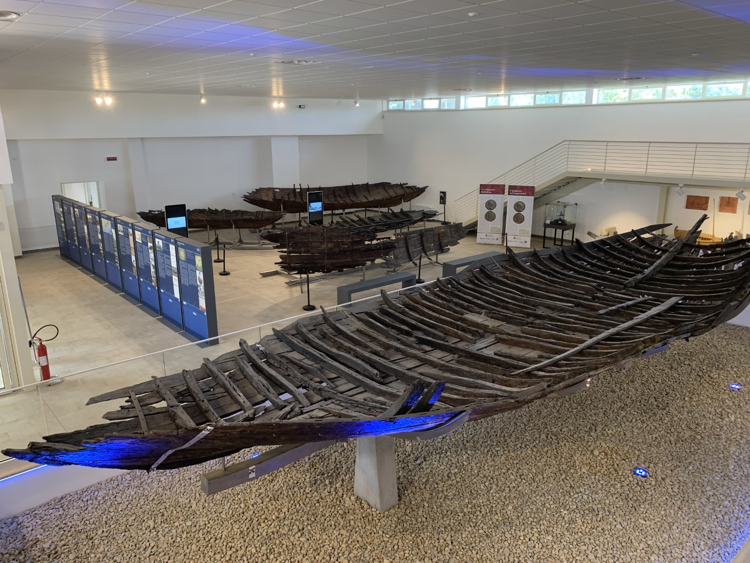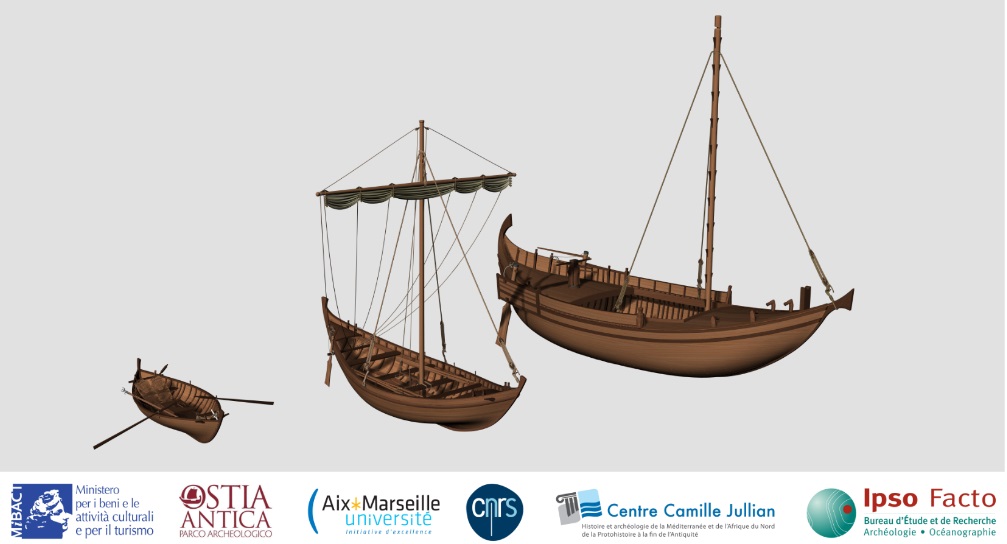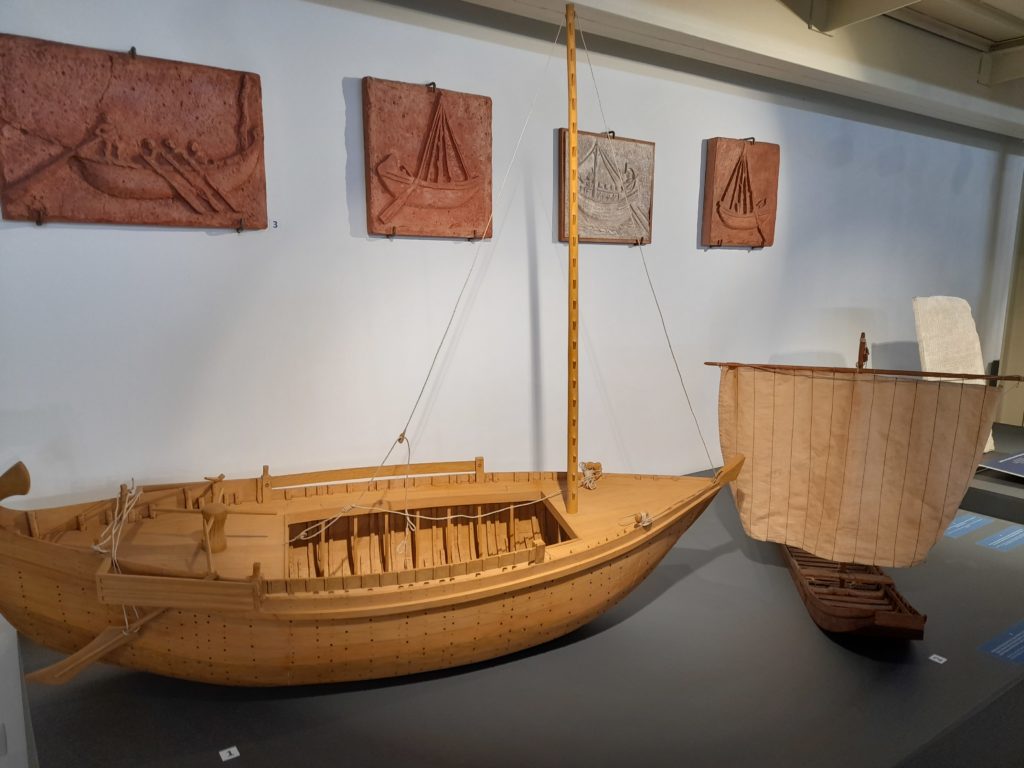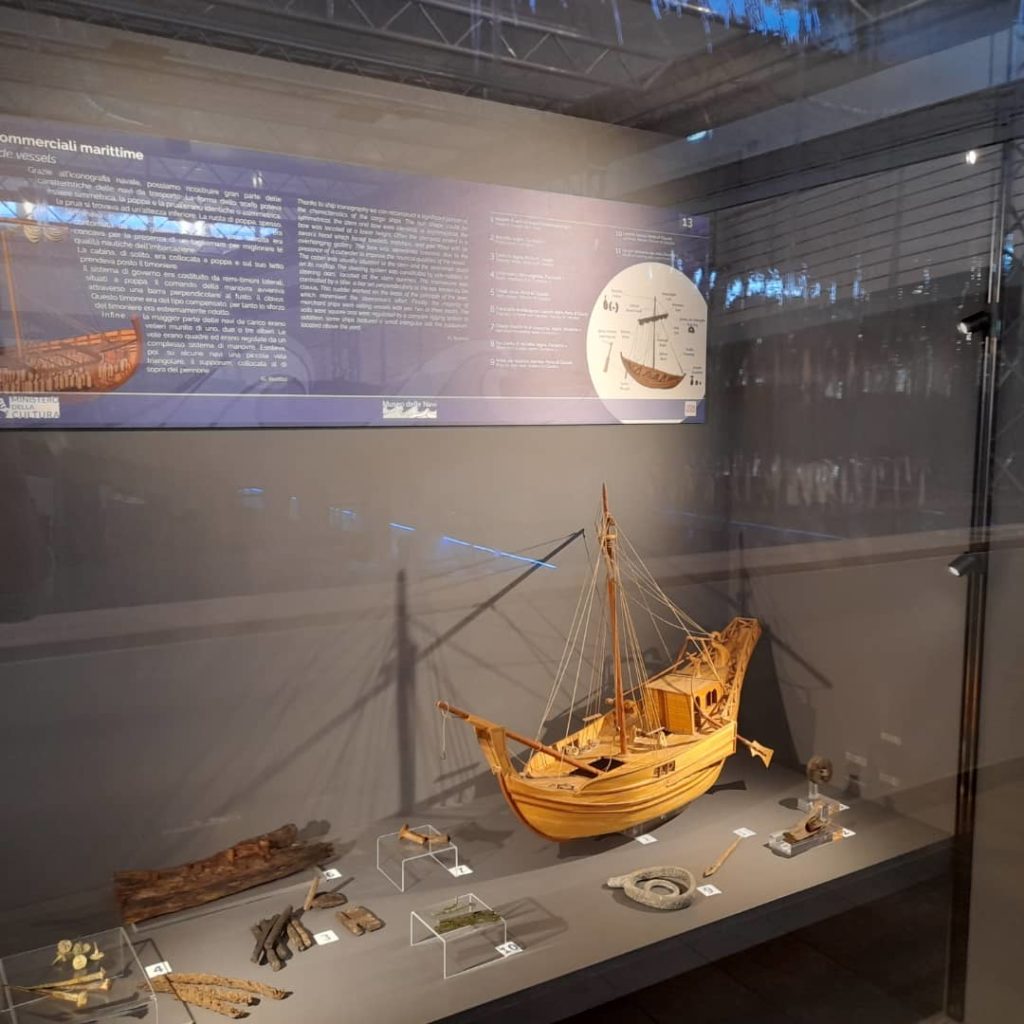



The Museum of Roman Ships is an archaeological museum located near the Rome-Fiumicino airport which houses one of the most important collections of ancient ships in the Mediterranean, of which the five main wrecks form an exceptional whole: three river boats for the transport of goods along the Tiber between Portus and Rome, a sea transport ship and one of the rare known Roman fishing boats whose use is certain, equipped with a central aquarium to keep the fish alive.

The Museum also occupies a particular position in the panorama of European museums of ancient ships.

In fact, Portus Ostiensis Augusti, the largest port in the Roman Empire, was built in the same place where the ships were found, within the ancient port basin of Claudius and Trajan.

During the works for the construction of the Rome-Fiumicino airport, several archaeological remains were found belonging to the ports of Claudius and Trajan, including the northern pier and the so-called "capitaneria".

In 1958 the first boat was found, called Fiumicino 2, followed by three other ships between 1959 and 1961, Fiumicino 1, Fiumicino 3 and Fiumicino 5.

In the following years two parts of the side belonging to the ships Fiumicino 6 and Fiumicino 7 and the hull of the sailing ship Fiumicino 4 were also brought to light, while a further wreck, the Fiumicino 8, was not excavated due to the poor state of conservation.

Considering that the contact with the air would have led to a strong deterioration of the artifacts found, the Civil Engineers, under the direction of the engineer Otello Testaguzza and the archaeologist Valnea Santa Maria Scrinari, built a wooden hangar on the site of the main finds where the wrecks were transported and consolidated.

The hangar was soon turned into a museum and was inaugurated in 1979.

Due to infrastructure problems the museum was closed in 2002 and reopened its doors in October 2021.

Museum of Roman Ships
Address: Via Alessandro Guidoni, 00054
Phone: 06 56358099
Site:
https://www.ostiaantica.beniculturali.it/it/aree-archeologiche-e-monumentali/museo-delle-navi-di-fiumicino/Location inserted by
CHO.earth